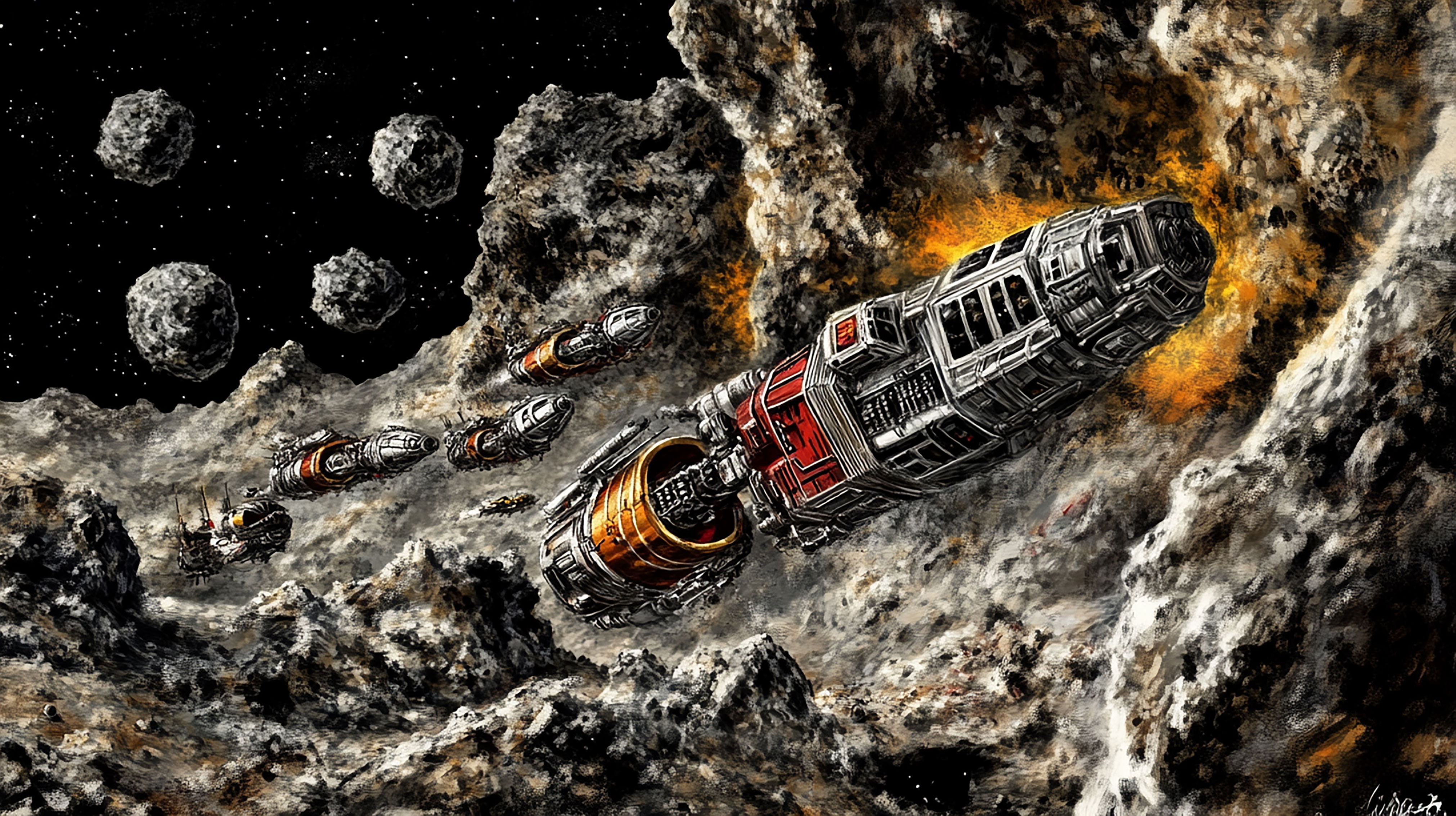Asteroid Mining: Science and Economics of Space Resources in 2025
Introduction
By 2025, asteroid mining has emerged as a viable enterprise, with the potential to unlock trillions of resources from the rocky bounty of the solar system. As Earth's finite supplies of platinum, rare earths, and water dwindle amid surging demand for electronics and space exploration, the asteroid belt—home to over a million bodies between Mars and Jupiter—emerges as the next frontier. Scientific advancements, like China's Tianwen-2 mission launched in May 2025 to sample the near-Earth asteroid 469219 Kamoʻoalewa, herald a new era of extraterrestrial resource extraction, while economic projections paint a $1.8 trillion space economy by 2035, with mining at its core.
This exploration combines the clever use of robots to search for materials with the potential for huge profits, highlighting important missions, technical challenges, market factors, and ethical issues. From the metallic allure of Psyche—estimated at $10 quintillion in value—to the regulatory tightrope of space law, asteroid mining isn't just about digging rocks; it's about redefining humanity's resource paradigm. As startups like AstroForge pioneer extraction and the World Economic Forum anoints quantum-adjacent quantum mining ventures, 2025 crystallizes the shift from exploration to exploitation—let's mine the stars.
The Science of Asteroid Mining: Composition, Identification, and Extraction
Asteroids, leftover materials from the solar system's formation 4.6 billion years ago, are divided into three types: C-type (75% of all asteroids, containing water and organic materials), S-type ( Their science underpins mining: Telescopes like NASA's NEO Surveyor (launching in 2028) use spectral analysis to find volatiles that can be used as fuel or metals that can be used in industry.
Prospecting and Resource Mapping
Tianwen-2, China's ambitious 2025 mission, targets Kamoʻoalewa—a quasi-Earth satellite 40-100 m wide—using a sample-return capsule to collect 100 g of regolith, returning in 2026. Orbiting at 50 km, it deploys a lander for surface analysis, using LIBS (Laser-Induced Breakdown Spectroscopy) to zap rocks for elemental composition—detecting water ice or nickel-iron alloys. NASA's OSIRIS-REx, returning Bennu samples in 2023, paved the way, finding hydrated minerals hinting at ancient water delivery to Earth.
2025's Psyche mission, en route since 2023, arrives in October 2025 to map the M-type asteroid's iron-nickel core using gamma-ray spectrometers, revealing up to 10^19 kg of metals—enough platinum to crash terrestrial markets. Scientific hurdles: Microgravity extraction and optical mining (lasers vaporizing regolith for magnetic collection) were tested by TransAstra's 2025 prototype, yielding 90% efficiency in vacuum sims.
Extraction Technologies
Asteroid mining needs machines that can work on their own: NASA's "Asteroid Redirect Mission" ideas are developing into robotic arms by 2025 that use electrostatic grippers Water extraction—key for H₂/O₂ fuel—uses solar-thermal vaporizers, a TransAstra innovation processing 1 kg/hour from C-type asteroids. Metals? Electrolysis separates nickel-iron, and Made In Space's 2025 orbital refinery demonstration will recycle satellite debris as proof of concept.
New technology allows groups of 10-20 robots to explore areas of 1 square kilometer, using advanced imaging to accurately map 95% of resources.

Economics of Asteroid Mining: Trillions at Stake
Asteroid mining's economic allure is staggering: Psyche alone holds $10 quintillion in metals—1,000x global GDP—while the belt's 16 quadrillion tons of iron could supply humanity for 100,000 years. 2025's market, valued at $2.05B (up from $1.68B in 2024), grows at a 22% CAGR to $10B by 2030, per The Business Research Company, driven by platinum ($30M/kg) and cobalt ($80K/ton) for EVs.
Cost-Benefit Analysis
Launch costs plummeted 95% since 2010 (SpaceX Falcon 9 at $2,700/kg), but mining adds $100-500/kg for extraction/return. ROI: A single 1 km asteroid yields $1T in platinum-group elements (PGEs), per BBC Future, but initial missions cost $1-2B. AstroForge's 2025 Brokkr-2 prospector, launching in Q4, targets 1 kg PGE samples, valued at $30K—proving economic viability. Space economy projections: WEF's $1.8T by 2035 includes 20% from mining, with asteroid-derived nickel cutting EV battery costs 30%. Return models: Process in-orbit (orbital refineries) or Earth-return (capsules), with in-space favoring low-gravity metals.
Market Players and Investments
Startups lead: AstroForge raised $40M in 2025 for Brokkr missions; TransAstra's $16M NIAC grant funds optical mining. Planetary Resources' legacy inspires; WEF's 2025 Pioneers include quantum-enhanced miners. Governments: China's CNSA eyes lunar helium-3; NASA's Artemis Accords (30 signatories) framework space resources.
Challenges: Technical, Legal, and Economic Barriers
Technical: Low gravity (10^-6 g) hinders drilling; solution: Electrostatic anchoring, per 2025 Space.com. Legal: The 1967 Outer Space Treaty bans sovereignty, but the 2020 Artemis Accords allow extraction; critics like Russia protest "space piracy." Economic: $1B+ missions vs. $1T returns, but insurance and market floods (platinum crash) loom, per Harvard International Review.
Case Studies: Missions and Prototypes
- Tianwen-2 (2025): CNSA's sample return to Kamoʻoalewa tests water/metal extraction; 2-year mission informs 2030 lunar mining.
- Psyche (2025 Arrival): NASA's $1.2B orbiter maps $10 quintillion in iron-nickel, validating PGE yields.
- AstroForge Brokkr-2: The 2025 launch deploys a solar-electric tug to NEA for 1 kg ore return, $40M funded.
Future Prospects: A Mined Solar System by 2040
By 2035, 10-20 missions will prospect 50 asteroids, per Interesting Engineering; 2040 sees orbital refineries processing 1,000 tons/year. Economics: The space economy is worth $1.8 trillion, and mining makes up 25% of that. Sustainability: In-situ use cuts Earth impact.
Conclusion
Asteroid mining's science and economics in 2025—from Tianwen-2's samples to Psyche's trillions—herald a resource renaissance. As BBC Future questions timelines, advancements affirm: The stars' riches await. Investors and innovators, the belt beckons.